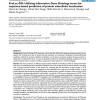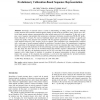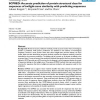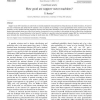409 search results - page 19 / 82 » Predicting Nucleolar Proteins Using Support-Vector Machines |
JCB
2000
13 years 7 months ago
2000
A new method for detecting remote protein homologies is introduced and shown to perform well in classifying protein domains by SCOP superfamily. The method is a variant of support...
BMCBI
2008
13 years 7 months ago
2008
Background: Gene Ontology (GO) annotation, which describes the function of genes and gene products across species, has recently been used to predict protein subcellular and subnuc...
JCC
2008
13 years 7 months ago
2008
: Knowledge of structural classes is useful in understanding of folding patterns in proteins. Although existing structural class prediction methods applied virtually all state-of-t...
BMCBI
2008
13 years 7 months ago
2008
Background: Protein structure prediction methods provide accurate results when a homologous protein is predicted, while poorer predictions are obtained in the absence of homologou...
NN
2000
Springer
13 years 7 months ago
2000
Springer
Support vector (SV) machines are useful tools to classify populations characterized by abrupt decreases in density functions. At least for one class of Gaussian data model the SV ...




